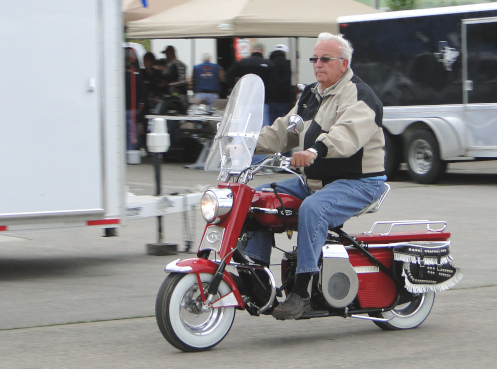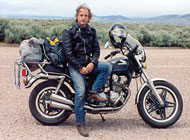Starting Out Big
Big, 800-pound bagger motorcycles are very popular, at least in the U.S., but there’s one place you’ll never see them: at the Department of Motor Vehicles on the license testing range.
When you’re getting your motorcycle accreditation you have to pass the written test and also pass a driving test, just like with a car. The driving portion for a bike takes place out in the parking lot, where they set up cones and have you ride through the course demonstrating your competence. On a scooter, or a small bike, such as a 250cc Honda Rebel, it’s easy. For a beginning rider to maneuver their full-size bike around the course, the likelihood of success is minute.
I didn’t know this when I bought my first bike. But I learned.
I had ridden motorcycles whenever I had the opportunity for many years, but it was only once I bought my first bike, a 1980 Honda CB750 Custom, that I got licensed. My friends told me then that it would be good to get a small bike to take the test but I didn’t have any idea where to get that small bike so off I went on my 750.
Now, a 750cc bike is only considered a mid-size bike anymore, though it was a big bike in 1980, and it still weighs about 500 pounds. I suspect the licensing examiner was surprised to see what I rode in on but no matter, let’s go do the test.
The first part of the course demonstrates handling control. You have to weave around cones in a slalom pattern at slow speed. Then there was a right turn, and another right turn, which set you up to come into a much tighter box where you have to do a 180-degree turn.
I did not make it through all the cones and when I came around for the 180 I had not understood the directions properly. I thought the examiner told me to stay outside the lines, when in fact I was supposed to stay inside them. I was successful in staying outside. You then start out from a spot where you accelerate forward and then brake and swerve sharply as if you were avoiding an obstacle. That part was easy.
Of course I failed the test. And I was very surprised when she told me I utterly failed to make the U-turn within the lines. Ooooh. Within! I get it now.
Second Try
Now that I knew what the test consisted of I practiced. I showed up again a few days later, not at all confident I would succeed, but willing to take a shot at it. With no training I instinctively figured out that to weave through the cones I had to drag the rear brake, where you keep the engine revved for stability while working the rear brake to move forward at about walking speed. To my relief, I got through the cones just fine.
Heading into the U-turn I now knew I needed to stay inside the lines and, dragging the rear brake again, I successfully executed the turn. Coming out of it, however, the lean was too great and the bike laid over on its side. It didn’t actually go all the way down; it ended up resting half-way up on the foot peg. I looked at the examiner and she said she couldn’t help me but if I got the bike back up I could keep going with the test.
I raised the bike and continued and everything else went fine. She passed me. Yahoo!
I have since learned that one of the major benefits of taking a Motorcycle Safety Foundation riding course is that you learn on small bikes and at the end of the course you do the riding portion of the test. If you pass, all you have to do to get your license is go to Motor Vehicle, pass the written portion, and pay your fee. Of course you also get some training in the process, which is a very good thing.
Had I known all this that’s probably what I would have done. I didn’t, though, so now I take pride in being able to say I passed the test on my real, full-sized highway bike. And I love the looks of amazement I get when I say that.
Biker Quote for Today
We know you’re a poser if you put your pony-tail back in the drawer after you get home.

